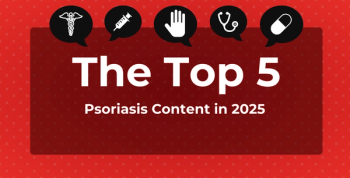
First Do No Harm: HER2-Positive Breast Cancer, Trastuzumab, and Cardiac Monitoring Guidelines: Part 2
In part 1 of "First Do No Harm," Ms Madden noted important new research suggesting that the majority of patients with HER2+ breast cancer who are treated with the anti-HER2 agent trastuzumab do not receive sufficient cardiac monitoring. In part 2, she discusses the implications of this recent study for patients with this aggressive form of breast cancer and protective strategies against preventable harms of their treatment.
The fact is that trastuzumab-induced cardiotoxicity may include an asymptomatic decrease in the heart’s left ventricular ejection fraction (LVEF) and, in some cases, clinical heart failure, with the incidence and severity of associated cardiotoxicity being highest in those who were also treated with anthracycline chemotherapy. In most cases, such cardiotoxicity is reversible with withdrawal of trastuzumab and, if necessary, heart failure therapy. Yet importantly, “most cases” does not translate into all cases. Per the package insert, “Congestive heart failure associated with Herceptin therapy may be severe and has been associated with disabling cardiac failure, death, and mural thrombosis leading to stroke,” emphasizing the importance of baseline/pre-treatment cardiac assessment, including history, physical examination, and determination of baseline LVEF through echocardiogram or multiple-gated acquisition scan immediately prior to initiation of trastuzumab. It also calls for monitoring of LVEF in all patients at 3- to 4-month intervals throughout therapy. Furthermore, it is noted that extreme caution must be used concerning treating patients with cardiac comorbidities, that the risk for cardiotoxicity was highest in those who received trastuzumab concurrently with anthracyclines, and that advanced age may increase the risk of cardiotoxicity. Thus, the obvious take-home message: understanding the risk factors for such cardiotoxicity and following guidelines for appropriate patient monitoring is crucial to detect cardiac dysfunction as early as possible when treatment can be given to prevent permanent cardiac changes—and thus is necessary for the safe use of this important targeted agent.
In a separate interview with MedPage Today,1 the lead author of the aforementioned study, medical oncologist and assistant professor at the University of Texas MD Anderson Cancer Center, Dr. Chavez-MacGregor noted that she and her colleagues suspected the rates of cardiac monitoring would be below the suggested recommendations, yet were surprised by how low the percentages were found to be by their research. To assess the patterns of cardiac monitoring and to evaluate factors associated with adequate monitoring, the investigators extracted Medicare-linked data from the SEER database and the Texas Cancer Registry on patients 66 years of age and older diagnosed with Stage I to Stage III breast cancer between 2005 and 2009 and who were treated with adjuvant trastuzumab. In their evaluation, the investigators identified trastuzumab use, chemotherapy, cardiac monitoring, and patient comorbidities using the International Classification of Diseases, 9th revision (ICD-9) codes and Healthcare Common Procedure Coding System (HCPCS) codes assigned to diagnostic, medical, and surgical services performed for Medicare patients. They also assessed prescribing/ordering physicians’ characteristics.
Of the 2203 patients identified for the study, adequate cardiac monitoring was identified in just 36% of patients (n = 793). Said another way, despite the known cardiac risks associated with trastuzumab therapy and the publicized guidelines for patient monitoring, this study suggests that these crucial safety precautions are not being taken for nearly two-thirds of HER2+ breast cancer patients who receive adjuvant trastuzumab. Also of concern is that certain physician characteristics, rather than patient characteristics, appear to have the greatest influence on the adequacy of cardiac monitoring. The study results indicated that those patients who received optimal cardiac monitoring were more likely to have:
- A more recent year of diagnosis (Hazard ratio (HR), 1.83)
- A female prescribing or ordering oncologist (HR, 1.37)
- An oncologist who graduated after 1990 (HR, 1.66)
- Received treatment with anthracycline chemotherapy regimens (HR, 1.39).
Alarmingly, although those patients with cardiac comorbidities are known to be at increased risk for trastuzumab-induced cardiotoxicity, they were not more likely to receive adequate cardiac monitoring. And overall, of the variance in the adequacy of monitoring, just 5.2% was attributable to patient factors, whereas 15.3% was attributable to physician characteristics.
The study’s authors are hopeful that their findings will impact the practice of oncologists, concluding that “Because trastuzumab-related cardiotoxicity is reversible, efforts to improve the adequacy of cardiac monitoring are needed, particularly in vulnerable populations.”
We know that implementation of clinical guidelines can often be delayed due to lack of provider awareness of such changes and in some cases the inclusion of complex new clinical algorithms. We also know that the use of protocols and their inclusion within systems can enhance the provision of evidence-based care and improved outcomes for patients. Yet the results of this important study are so disturbing because, again, we have known about the potential for severe trastuzumab-induced cardiotoxicity for nearly 15 years now. So to come full circle, the 6 million dollar question concerns why such cardiac monitoring is not taking place for most patients? Whether you’re an oncologist, a primary care physician, a cardiologist, a breast cancer patient, or an advocate, please consider sharing your thoughts on why such clinical guidelines are so frequently not being followed and what actions going forward can be realistically and effectively taken to avoid such preventable harms for patients.
Reference
1. Swift, D. Study: Breast ca patients need better cardiac monitoring. MedPageToday website. http://www.medpagetoday.com/HematologyOncology/BreastCancer/51503. Updated May 3, 2015. Accessed on June 24, 2015.
Newsletter
Stay ahead of policy, cost, and value—subscribe to AJMC for expert insights at the intersection of clinical care and health economics.








































